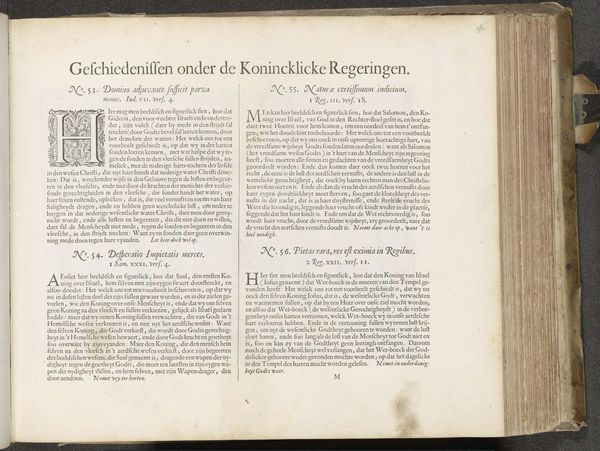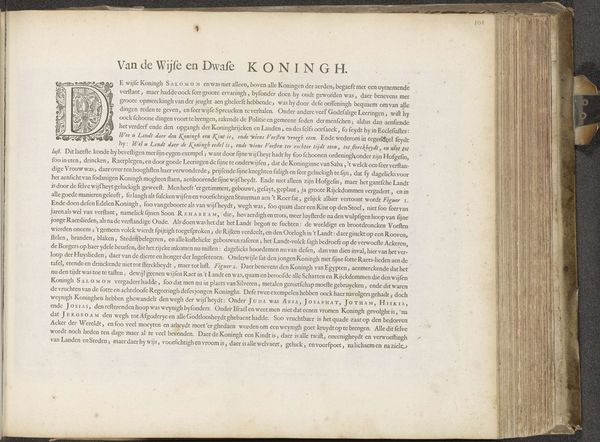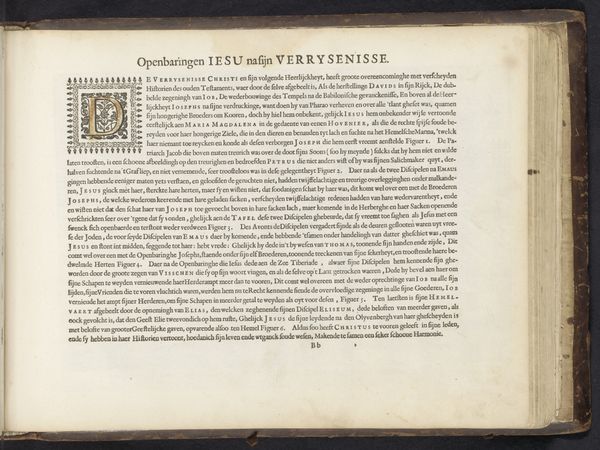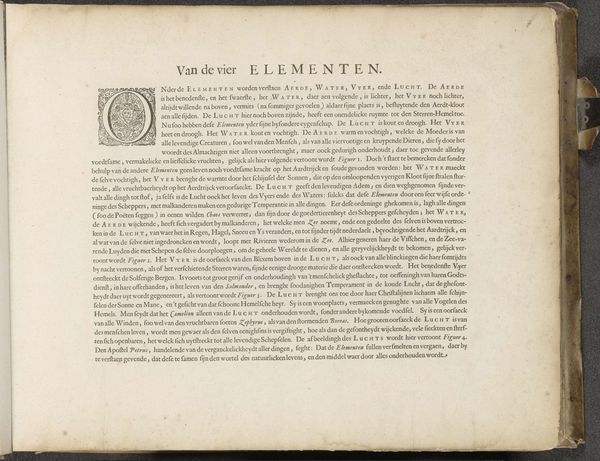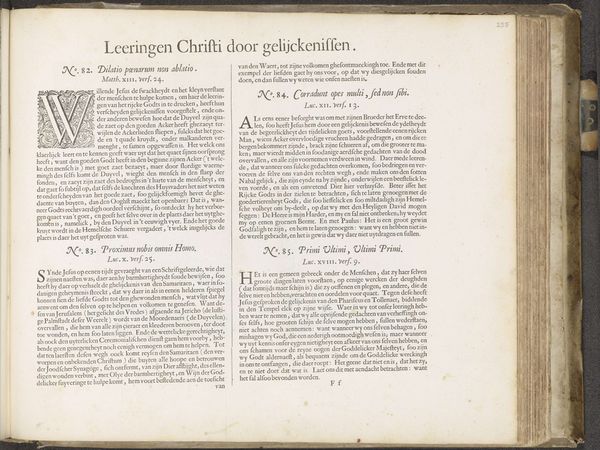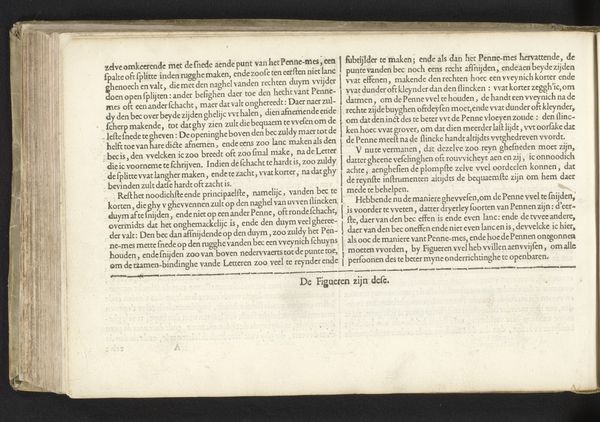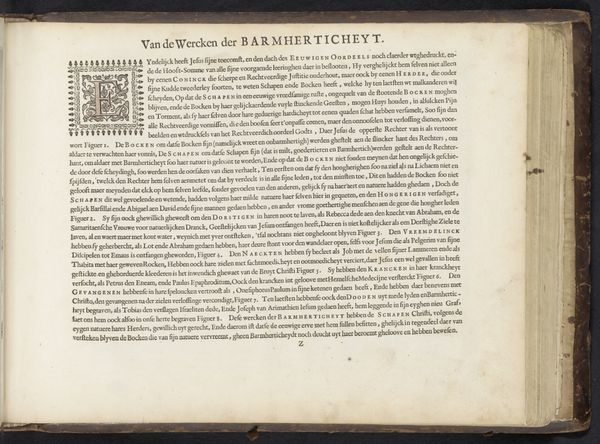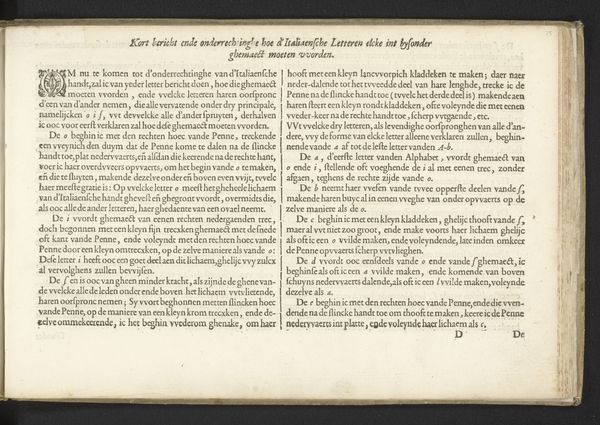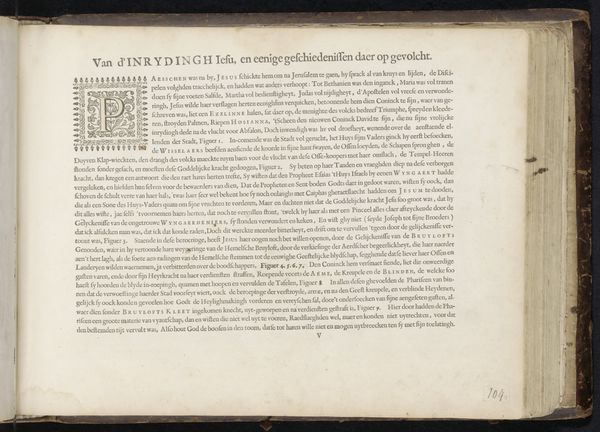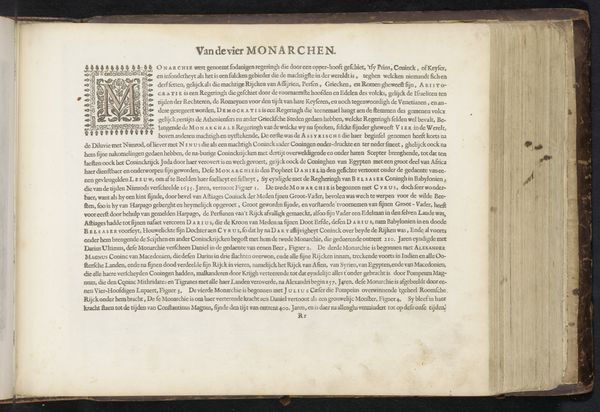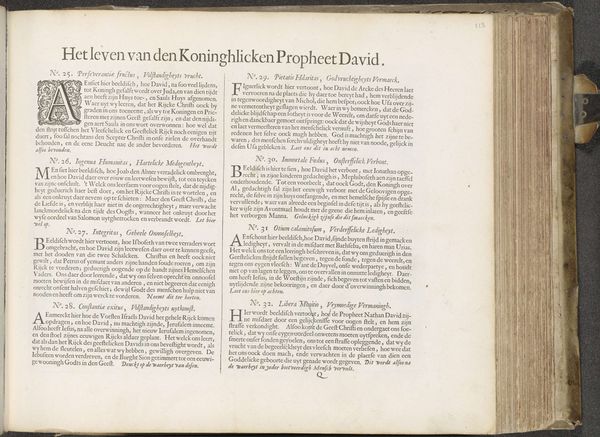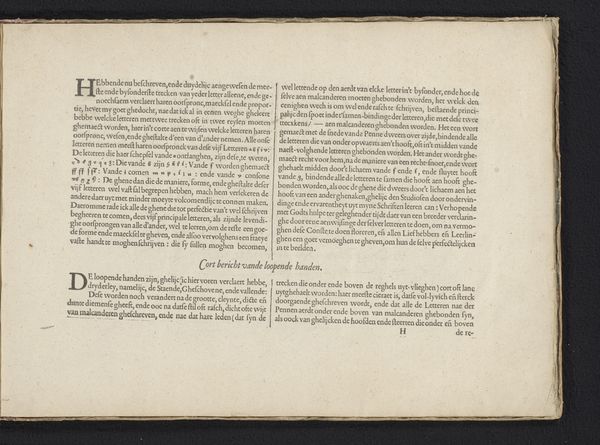
Toelichtingen bij voorstellingen van de vier Evangelisten 1653 - 1654
0:00
0:00
janphilipszschabaelje
Rijksmuseum
drawing, print, paper, ink
#
portrait
#
drawing
#
dutch-golden-age
# print
#
paper
#
ink
#
coloured pencil
#
historical font
#
calligraphy
Dimensions: height 295 mm, width 370 mm
Copyright: Rijks Museum: Open Domain
Curator: Today we're looking at "Toelichtingen bij voorstellingen van de vier Evangelisten" by Jan Philipsz Schabaelje, created between 1653 and 1654. It’s currently housed in the Rijksmuseum. The piece is a combination of drawing and print, using ink on paper. What's your immediate impression? Editor: It's...dense. Visually, it's overwhelming; the texture of the text creates a solid block, making it initially uninviting. I immediately sense the weight of religious doctrine bearing down on me, before I've even processed the content. Curator: I can understand that. Schabaelje has prioritized the communication of complex theological arguments. Note how he utilizes calligraphy, emphasizing the Dutch Golden Age style to establish authority. The historical font choices reinforce a sense of established knowledge. Editor: Precisely, but this artistic decision comes with implications. It presents information in a very controlled way. Access to this knowledge would likely have been limited, reinforcing social hierarchies and potentially excluding those who couldn't decipher the language or comprehend the theological intricacies. Curator: Perhaps, but consider the intent. The detailed rendering and deliberate layout suggest a desire for clarity, a wish to explicate the Gospels for those with some literacy, perhaps newly literate readers. We see distinct sections dedicated to each of the four Evangelists. Editor: Yes, distinct but equally dense. While I recognize the intention might be pedagogical, the presentation remains daunting. The coloured pencil details, as rendered in our AI tag, highlight the manual labour involved in disseminating this religious information, pointing towards a community deeply invested in scripture. However, whose interpretations are prioritized? Curator: We see, then, a tension between accessibility and exclusivity inherent in this print. The structure directs the viewer to dissect the artist's understanding through his composition, which, in turn, dictates how audiences perceive the holy texts. Editor: It serves as a potent reminder that access to knowledge and its interpretation is never neutral, particularly in historical and religious contexts. I'm left contemplating how artistic choices can both illuminate and obscure power dynamics. Curator: An excellent point. Ultimately, reflecting upon the construction of this image prompts important questions regarding agency, understanding, and societal values that ripple throughout time.
Comments
No comments
Be the first to comment and join the conversation on the ultimate creative platform.
